#Autonomous vehicles
Explore tagged Tumblr posts
Text





Tesla Cybercab, 2024. A 2 seat autonomous EV that will be made available to both private buyers and fleets for $30,000. Because the car drives itself there's no need for rear vision mirrors and even a back window. The Cybercab will go on sale in 2027 subject to regulatory approval
512 notes
·
View notes
Text
We don’t yet know exactly why a group of people very publicly graffitied, smashed, and torched a Waymo car in San Francisco. But we know enough to understand that this is an explosive milestone in the growing, if scattershot, revolt against big tech. We know that self-driving cars are wildly divisive, especially in cities where they’ve begun to share the streets with emergency responders, pedestrians and cyclists. Public confidence in the technology has actually been declining as they’ve rolled out, owing as much to general anxiety over driverless cars as to high-profile incidents like a GM Cruise robotaxi trapping, dragging, and critically injuring a pedestrian last fall. Just over a third of Americans say they’d ride in one. We also know that the pyrotechnic demolition can be seen as the most dramatic act yet in a series of escalations — self-driving cars have been vocally opposed by officials, protested, “coned,” attacked, and, now, set ablaze in a carnivalesque display of defiance. The Waymo torching did not take place in a vacuum. To that end, we know that trust in Silicon Valley in general is eroding, and anger towards the big tech companies — Waymo is owned by Alphabet, the parent company of Google — is percolating. Not just at self-driving cars, of course, but at generative AI companies that critics say hoover up copyrighted works to produce plagiarized output, at punishing, algorithmically mediated work regimes at the likes of Uber and Amazon, at the misinformation and toxic content pushed by Facebook and TikTok, and so on. It’s all of a piece. All of the above contributes to the spreading sense that big tech has an inordinate amount of control over the ordinary person’s life — to decide, for example, whether or not robo-SUVs will roam the streets of their communities — and that the average person has little to no meaningful recourse.
522 notes
·
View notes
Text
Montando en un taxi autónomo en San Francisco:
82 notes
·
View notes
Text

#art#design#fyp#luxury#indeedgoodman#Tesla Cybertruck#elon musk#tesla#cybertruck#vehicle#suv#electric cars#automobiles#cars#autonomous vehicles#electric vehicles#unusual vehicles
63 notes
·
View notes
Text
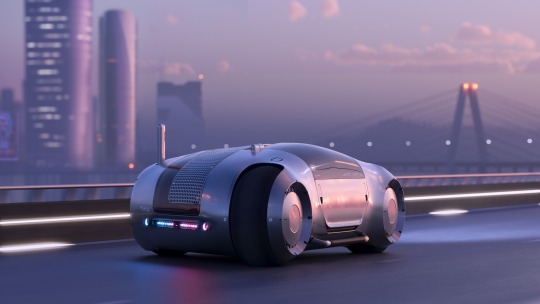
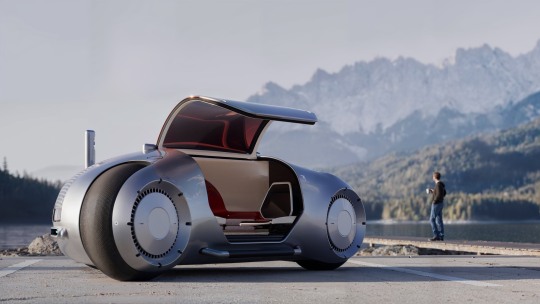
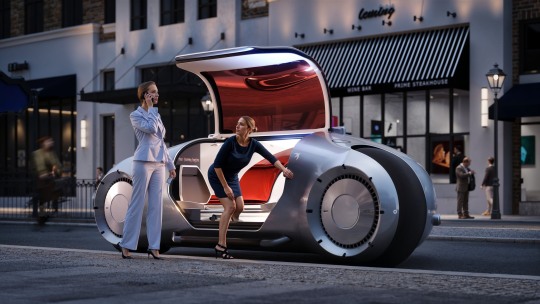
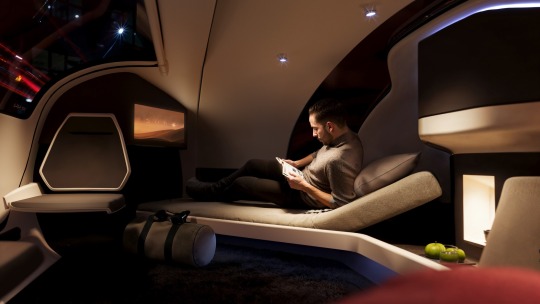


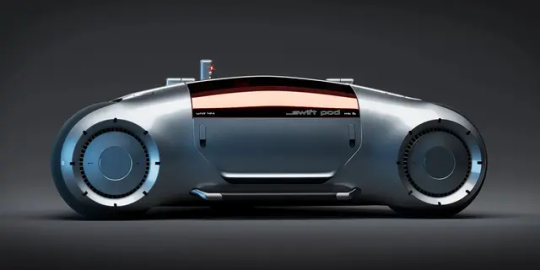
"Swift Pod"
Designer Peter Stulz and his 3D illustration studio Xoio conceived this autonomous overnight travel concept vehicle which can drive passengers on its own while they’re sleeping inside the hotel-like cabin.
For the design team, Swift Pod can be booked like a normal taxi using an app – along with the desired time and place, or even pre-reserved for a specific date.
Once the autonomous overnight travel pod arrives, passengers board inside, and the vehicle autonomously calculates the optimal route and required speed to reach the destination in time.
Courtesy of Peter Stulz / Studio Xoio
#art#design#luxury cars#luxury lifestyle#luxurycars#luxurylifestyle#pod#travels#hotel#autonomous vehicles#autonomous car#vehicle#swift#peter stulz#xoio#concept#render#boutique hotel#cabin
86 notes
·
View notes
Text
Self driving cars are an inevitability at this point.
Not just assisted, but full autonomous driving. And it is going to fundamentally change our relationship with cars and transportation in general.
People are going to stop buying cars. The whole sales pitch of everyone buying their own self driving car is ludicrous— it fundamentally misses the opportunity that self driving actually presents.
Owning a car sucks. Having constant immediate access to transportation is a form of autonomy.
Both those things can be true. A car has to be maintained, insured, parked, replaced, protected, fueled— this whole laundry lists of responsibilities to maintain access to self directed transportation.
What about all the perks of having a car, but none of the hassle? That’s what a self driving car offers. A car when you need it, where you need it, without having to worry about everything else that goes along with owning a car.
Because you won’t own the car.
How much time do you actually spend driving? How much time is your car just sitting there? Why worry about and pay for a car you’re not driving?
Your car is going to be a subscription service
Uber is already testing this basic model, but in a world of self driving cars it makes perfect sense. You don’t own a car. You have a Car Subscription, which means there is a car there to drive you when you need— scheduled in advance or on demand. You pay for different subscription levels (pay per mile, unlimited, luxury, etc)
A personalized public transportation
People will realize owning a car is actually a burden, and a fleet of self driving cars that take themselves for servicing and refueling is actually a world easier.
There are going to be two major downsides
First, you are going to be tracked. Not just where you’re going but what you’re listening to and riding with on the way there. Think about it— you will not be able to anonymously go anywhere
Owning a car will become suspicious— an expensive luxury that offers anonymity. It will be like having a pager in the 90s— associated with doctors and drug dealers. Bikes and motorcycles will thrive in the ‘socially acceptable non tracked transportation’
Second major issue will be ads
The double edge sword of a self driving car is that it frees you up to do other things.
You think you are going to get to sit and enjoy life uninterrupted by ads during your morning commute? Your Hulu and Netflix are already synced— you buckle your seatbelt and your episode picks up where you left off. Spotify is connected. Your use profile instantly tailors the ride to your tastes
Just watch a couple ads first
You can always pay extra to go ad free. You’re just sitting there anyways. Also means they can finally get rid of billboards (or at least move them to inside the car). Short on funds? Watch ads your whole ride for a discount.
Even shorter on funds? Well, we reached your destination, but the doors won’t unlock until you finish watching this two minute ad (and no closing your eyes)
51 notes
·
View notes
Text

Big rigs should not be driverless WTF
#Big rigs should not be driverless WTF#big rig#driverless cars#driverless trucks#driverless#occupational health and safety#occupationalhealth#electric vehicles#unusual vehicles#vehicle transport#autonomous vehicles#vehiclemaintenance#vehicles#vehicleshipping#ausgov#politas#auspol#tasgov#taspol#australia#fuck neoliberals#neoliberal capitalism#anthony albanese#albanese government#road safety#safety#class war#like wtf#wtf is going on#so hot wtf
17 notes
·
View notes
Text

The Future Right Before Our Eyes
#tesla#elon musk#cybertruck#wigoutlet#autonomous driving#autonomous vehicles#self driving cars#self driving vehicles
6 notes
·
View notes
Text
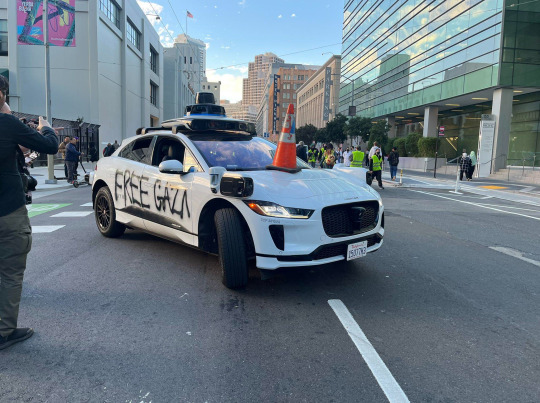
I love San Francisco. So many things converging in one shot.
#San Francisco#free Gaza#Palestine#protest#waymo#APEC#unicorn#self driving vehicles#autonomous vehicles#cruise#civil disobedience#California#doom loop#street art
23 notes
·
View notes
Text



XPENG X9 Official Sketches by Shubham yadav
#design#cardesign#concept car#cardesignnews#formtrends#art#architecture#exterior design#exterior#cars#electric vehicles#autos#autonomous vehicles#electric cars#futuremobility
6 notes
·
View notes
Text
Nvidia’s Jensen Huang says AI agents are ‘a multi-trillion-dollar opportunity’ at last nights CES AI keynote. Let that “multi Trillion” sink in, because this global movement is just getting started.
#ces 2025#CES#ai chips#generative ai#AI#artificial intelligence#robotics#autonomous vehicles#autonomous aircraft#agentic ai#nvidia
2 notes
·
View notes
Text





Volkswagen eT! 2011. A concept for an electric delivery van that could drive itself and follow its driver as they make deliveries on foot, developed with Deutsche Post and the Braunschweig University of Art
#Volkswagen#Volkswagen eT!#concept#van#concept van#electric van#prototype#design study#student design#autonomous vehicles#postal service#Deutsche Post
121 notes
·
View notes
Text
According to NHTSA, Americans drove 2,903,622,000,000 miles in 2021. That’s nearly three trillion miles, many of which were likely the sort of boring, uneventful highway driving where current Level 2 driver-assistance systems excel. American human drivers crashed 5,250,837 times in 2021 — once every 552,983 miles traveled. American human drivers have a 0.000181-percent crash rate. Put another way, on a per-mile basis, we’re 99.999819-percent crash-free. For an autonomous car to be safer than a human driver, it needs to avoid crashes at least 99.9982 percent of the time. “Oh, but Steve, those other decimal points are tiny,” you’re thinking. “How much of a difference could all those nines possibly make in the real world?” More than you’d think. If you drive the average amount for American drivers (14,263 miles per year), and 99.9 percent of your miles are crash-free, you’re still going to spend 14.3 miles every year crashing. At 99.99982-percent crash-free, you’ll spend 0.03 miles per year crashing — a year almost entirely free of impacts.
89 notes
·
View notes
Text
Eso NO es una moto…
33 notes
·
View notes
Text
Steampunk vehicles: Butterfly




#ai art#steampunk#ai#ai generated#ai artwork#scifi#retro scifi#city#bandcamp#fla#butterfly#vehicle#steampunk art#fantasy#construction planning#construction#vehicle transport#autonomous vehicles#indie music#machinery#cybernetics#robotics#flight#airship#float#cyberpunk city#Bandcamp
2 notes
·
View notes
Link
Autonomous vehicles are understandably held to incredibly high safety standards, but it’s sometimes forgotten that the true baseline is the often dangerous driving of humans. Now, new research shows that self-driving cars were involved in fewer accidents than humans in most scenarios. One of the main arguments for shifting to autonomous vehicles is the prospect of taking human error out of driving. Given that more than 40,000 people die in car accidents every year in the US, even a modest improvement in safety could make a huge difference.
6 notes
·
View notes